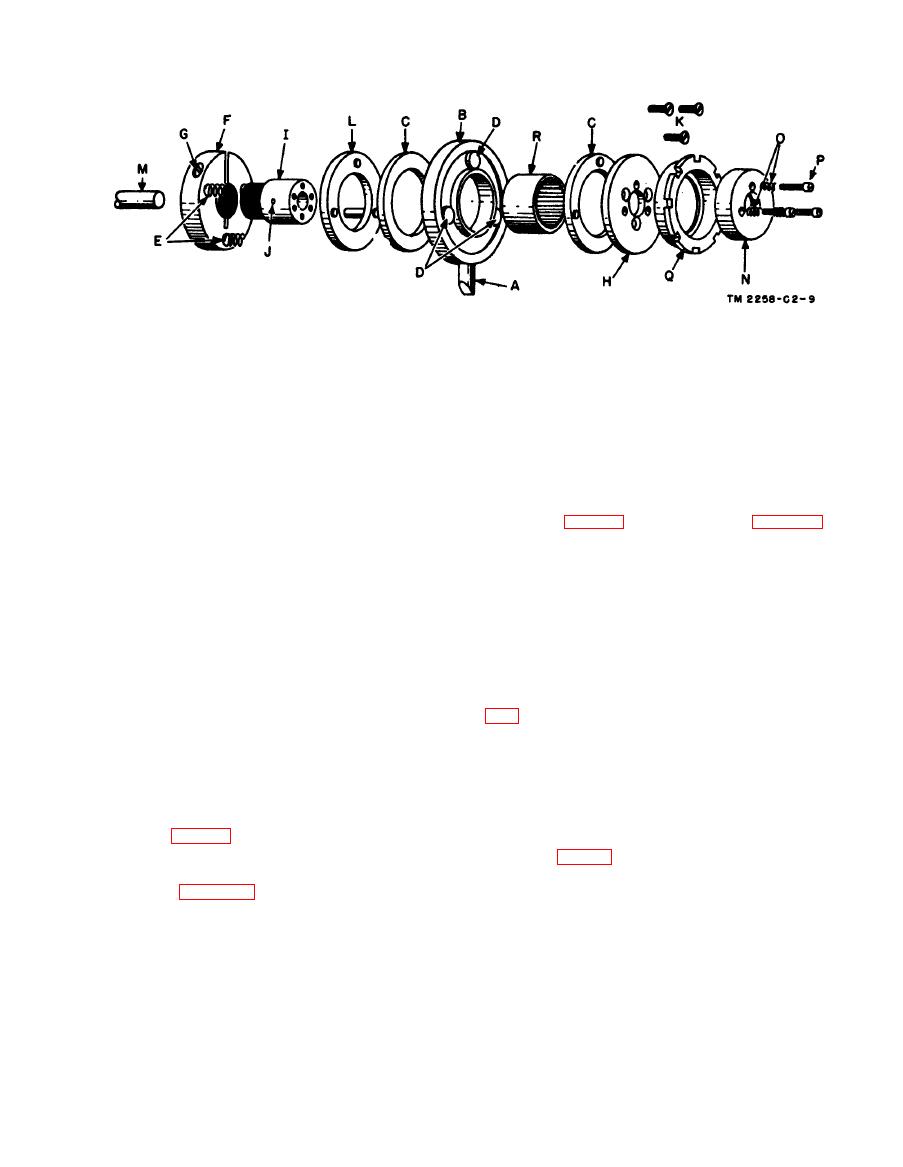
e. Lubrication. Erratic clutch tension usually
c. Binding. If the drum tads to bind on the
lead screw when it is turned or moved along the
indicates the need for lubrication. Refer to paar-
lead screw by hand, it is possible that the lead
graph 136.
screw is bent or nicked. A nick in the guide rail
f. Alinement of Shaft. For proper operation of
may cause binding. Do not blame the drum un-
the clutch and drive assembly, the shaft (M) must
be in alinement with the lead screw. The up-and-
less other repairs fail to solve the trouble. Binds
down alinement can be controlled in Facsimile
sometimes can be cleared by flushing the drum
bearings with solvent (SD) and relubricating with
Transceiver TT1/TXCl by the mounting screws
oil (PL Special).
of the motor, provided the motor has rubber
grommets in the mounting holes. Motors with-
and 118) is too loose and is free to move sidewise,
out grommets are machined in a jig and should
give no trouble in this respect.
jitters may occur in the recorded copy. If replace-
g. Dog Latch Cam Plate. Excessive wear and
ment parts are not available, a temporary repair
may be made by squeezing the walls of the key
damage are caused to the dog latch cam plate by
setting it improperly. The cam plate should be
retainer.
adjusted so that it first begins to trip the dog
latch after the dog latch haa traveled approxi-
occur in Facsimile Transceivers TT-1B/TXC-1
mately one-fourth of an inch past the end of the
through TT-1F/TXC-1, tighten the drum-tension
adjusting screw one-half turn. This is the upper
plate. The plate must engage the dog latch near
the tip to insure enough leverage. Adjustment
screw on the left-hand lead-screw bearing block
can be made by sliding the entire dog trip arm
(fig. 1 19).
assembly along the lead screw or by changing
f. Removal of Paper Clamp in Facsimile Trans-
shims under the cam plate. The dog latch and
ceiver TT1C/TXC-1.
trip arm must operate freely under a light tension
(1) To remove the paper clamp from the
from the springs.
drum, proceed as follows:
(a) Place a blunt instrument, preferably a
107. Drum
piece of hard wood, against the left-
hand edge of the paper clamp (C,
a. General. The drum of Facsimile Trans-
a hammer.
ceiver TT1(*)/TXC1 is constructed as illus-
trated in figures 117 and 118.
(b) Slide the paper clamp to the right about
b. Half Nuts. If the half nuts (split nuts) be-
one-half inch, then lift the clamp out
come damaged, replacement may be made from
of the drum.
(2) To remove the interred lever assembly,
the spares provided with the equipment. In
proceed as follows:
older equipments, each half nut holder is num-
bered. Later equipments will accept stock half
(a) Remove the knob on the right-hand
nub, and their retainers are lettered A and B.
side of the drum.
The half nuts must be matched with the corre-
(b) Remove the mounting plate and slide
spending markings on the retainer.
the assembly out of the drum.


